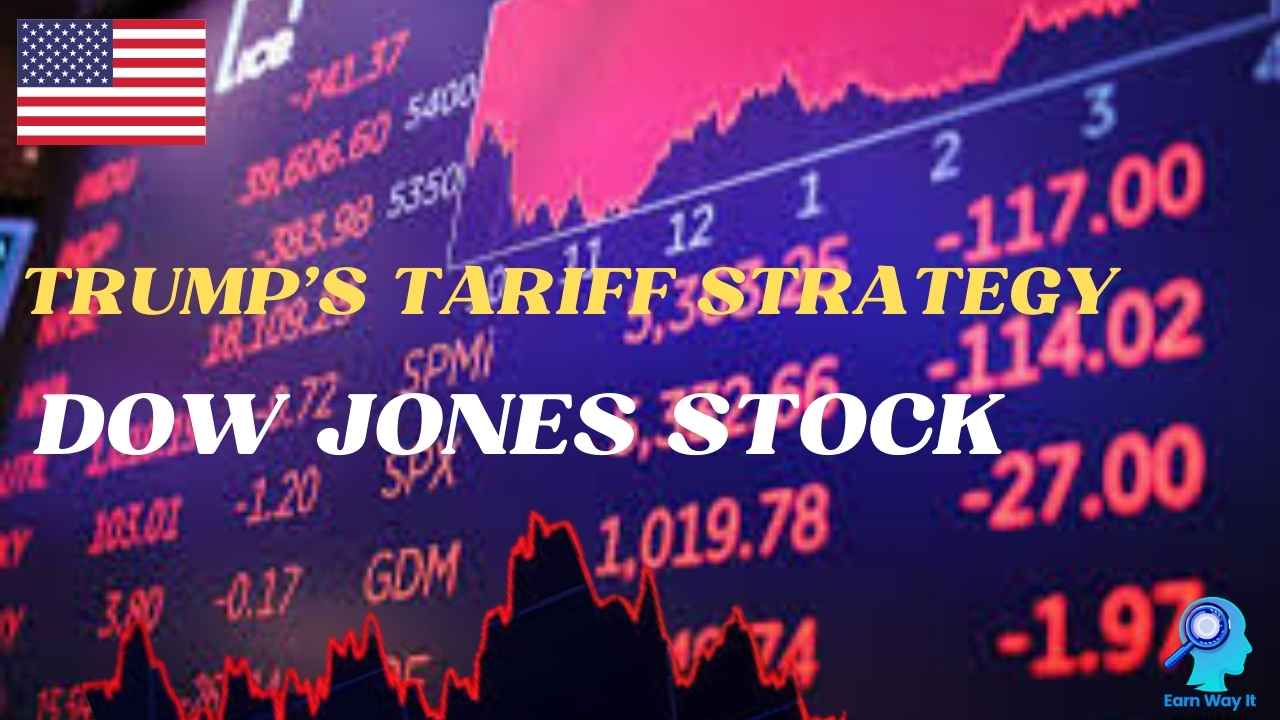For over a month, former President Donald Trump and his administration have been aggressively pushing April 2 as a landmark date for implementing widespread tariffs. However, as history has shown, Trump’s policies often come with more spectacle than substance. The latest developments indicate that the anticipated tariffs may not be as extensive as initially promised, leaving businesses and investors in a state of flux.
Table of Contents
Trump’s Tariff Announcements and Market Volatility
Markets, including the dow jones stock markets, have been reacting to Trump’s shifting stance on trade policies. Earlier this year, Trump made bold claims about imposing reciprocal tariffs, matching foreign countries’ import taxes dollar for dollar. While he has reiterated his commitment to this strategy, recent reports suggest that the administration is scaling back its original plan.
According to Bloomberg and the Wall Street Journal, instead of a sweeping tariff implementation on April 2, a reduced batch of tariffs will be announced. Further adjustments could follow, but no final decision has been made. This uncertainty is causing fluctuations in the dow jones stock markets, as investors try to predict the administration’s next move.
Tariff Implementation: A Fluid Situation
Despite earlier proclamations, the administration has hinted at ‘flexibility’ in implementing these tariffs. Trump has acknowledged that rigid tariffs could harm American interests. This shift in rhetoric has led analysts to believe that the most severe tariffs may not come into effect immediately. The dow jones stock markets responded positively to this news, with the index experiencing gains as investor fears eased.
Moreover, reciprocal tariffs, which were expected to affect multiple countries, are now set to impact only a select few. Treasury Secretary Scott Bessent has labeled certain nations as the “Dirty 15,” countries allegedly engaging in unfair trade practices against the U.S. These include economic powerhouses like China, the European Union, Canada, and Mexico. The decision to scale back on widespread tariffs has contributed to a rebound in the dow jones stock markets, with stocks rallying in anticipation of a less aggressive trade policy.
Market Response to Trump’s Trade Policies
Historically, the dow jones stock markets have reacted sharply to Trump’s tariff announcements. When tariffs were first introduced on steel and aluminum, the markets saw a significant drop. Similarly, uncertainty surrounding tariffs on Mexican and Canadian goods led to volatility in stocks. However, each time a delay or adjustment in policy was announced, the dow jones stock markets rebounded.
For example, on March 3, when 25% tariffs on Canada and Mexico were enacted, the markets saw a dip. But when Trump reversed the decision three days later, the dow jones stock markets recovered swiftly. These back-and-forth decisions have made it difficult for investors and businesses to plan ahead, increasing market unpredictability.
The Role of Global Trade Partners
Several trade partners have been negotiating with the U.S. to avoid the impact of Trump’s tariffs. The European Union postponed its retaliatory tariffs, originally set for April 1, as discussions continued. Similarly, Canada and Mexico have delayed countermeasures to ensure diplomatic negotiations remain open.
Trump’s stance has remained ambiguous—while he insists on strong trade policies, he has also shown a willingness to negotiate. This inconsistency has left businesses unsure of the future. Nevertheless, the dow jones stock markets have responded favorably to signs of flexibility, with investors hopeful that extreme measures will be avoided.
Investor Confidence and the Dow Jones Stock Markets
The uncertainty surrounding tariffs has created both opportunities and risks for investors. The dow jones stock markets have demonstrated resilience despite volatility, with many investors taking advantage of temporary dips to buy stocks at lower prices. The index saw a 530-point surge following reports that the harshest tariffs may not take effect as expected.
The yield on the 10-year Treasury also rose to 4.32%, reflecting a shift from bonds to stocks as investors became more confident in the dow jones stock markets. Meanwhile, the Cboe Volatility Index (VIX), a measure of market fear, dropped by 4.4%, indicating a reduction in uncertainty regarding trade policies.
Trump’s History of Tariff Delays and Reversals
Trump’s tariff policies have followed a pattern of bold declarations followed by amendments or delays. Initially, he had pledged to introduce tariffs on his first day in office but instead opted for a series of executive orders to study the matter. When the first round of tariffs on Canada and Mexico was announced for February 1, they were quickly delayed to February 4, then postponed further.
On March 11, Trump threatened a 50% tariff on Canadian steel and aluminum but withdrew the threat after Canada agreed to adjust its electricity surcharge. This pattern of threats and reversals has contributed to instability in the dow jones stock markets, forcing investors to stay on edge.
Future Outlook for Trade Policies and the Markets
Looking ahead, it is clear that Trump’s trade policies will continue to be a major factor influencing the dow jones stock markets. While some tariffs have been implemented, the administration’s history suggests that further adjustments are likely. The markets will remain sensitive to any policy changes, and businesses must stay adaptable to navigate potential disruptions.
Investors will need to monitor trade negotiations closely, particularly with key partners like the European Union, Canada, and China. Any progress in these talks could lead to positive movements in the dow jones stock markets, whereas renewed trade tensions may result in market downturns.
Conclusion
The unpredictability surrounding Trump’s tariffs has made a significant impact on global trade and the dow jones stock markets. While his administration has pushed for strong trade measures, the frequent delays and modifications have created a sense of instability among investors. As negotiations continue and policies evolve, the dow jones stock markets will likely remain a key indicator of investor sentiment regarding U.S. trade policies.
For now, market participants remain cautiously optimistic, hoping for clearer trade policies that can drive sustainable economic growth. Until then, the dow jones stock markets will continue to react dynamically to each new development in Trump’s tariff strategy.
